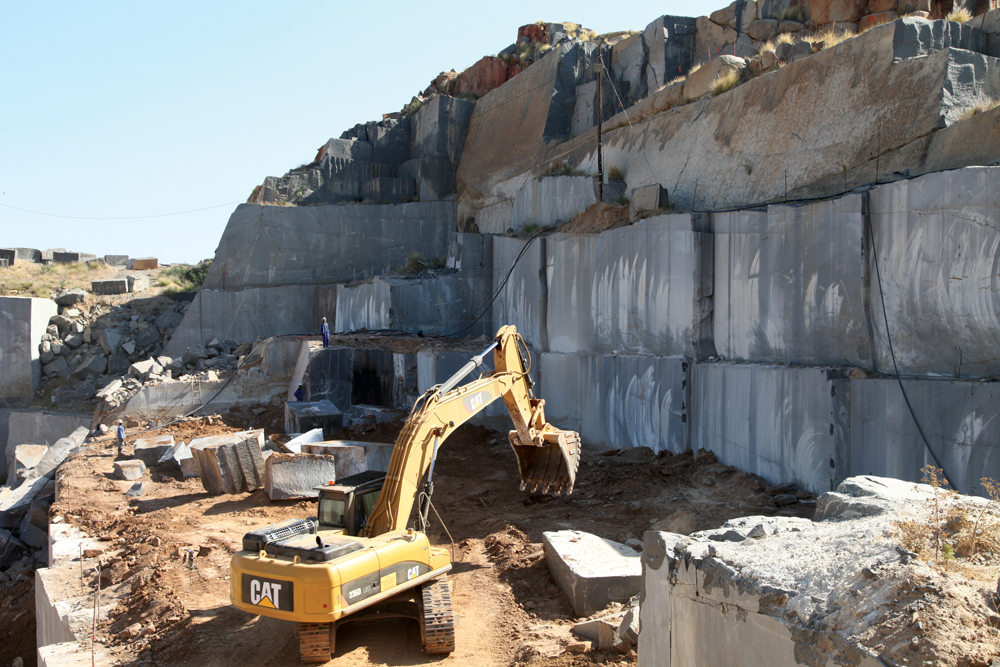A Journey Via Granite Quarries in South Africa: Introduction Nature's Creativity
A Journey Via Granite Quarries in South Africa: Introduction Nature's Creativity
Blog Article
Unearthing the Rich Background and Sustainable Practices of Granite Quarrying
As we depend on the precipice of discovering the elaborate tapestry of granite quarrying, a trip through time discloses not just the physical act of removing stone however additionally the cultural and historical relevance woven into the extremely textile of this method. From the old beginnings that laid the foundation for contemporary quarrying strategies to the sustainable methods that are forming the future of this industry, each sculpt mark on granite surface areas narrates waiting to be discovered (granite quarries in south africa). The heritage of granite quarrying extends far beyond simple removal; it is a testament to human ingenuity, resilience, and the long-lasting attraction of this magnificent stone
Old Beginnings of Granite Quarrying
Dating back to old worlds, the practice of quarrying granite has actually been an important part of human history and architectural innovation. The earliest proof of granite quarrying go back to ancient Egypt, where enormous pyramids and complex sculptures were crafted from this sturdy rock. The Egyptians utilized primitive devices to draw out granite blocks from quarries, showcasing the relevance of this product in their huge constructions.
Moving forward in history, the Greeks also made significant contributions to the quarrying of granite. The Greeks utilized granite in different building marvels, such as temples and sculptures, demonstrating their skill in shaping and carving this hardy stone. The Romans further refined the techniques of quarrying granite, using innovative devices like knives and hammers to essence and shape granite for their renowned structures.
Through the centuries, the practice of quarrying granite has actually advanced, with modern-day innovations improving effectiveness while preserving the timeless appeal of this all-natural rock - granite quarries in south africa. From ancient civilizations to contemporary contractors, the legacy of granite quarrying proceeds to form our world
Evolution of Quarrying Strategies
The advancement of quarrying methods has been noted by a constant progression towards better effectiveness and precision in removing granite. From the fundamental techniques employed by our ancestors to the sophisticated technologies utilized in modern-day quarrying operations, the industry has undergone substantial developments. Early quarrying methods involved manual work with basic devices such as knives, hammers, and wedges to extract granite blocks from the earth. As civilizations advanced, strategies like fire-setting and primitive explosives were introduced to promote the extraction procedure.
In even more current times, the introduction of equipment revolutionized the quarrying market, making it possible for faster removal prices and increased efficiency. Technologies such as ruby wire saws, high-pressure water jets, and pneumatic drills have actually come to be conventional in modern-day quarries, permitting accurate cutting and lowered waste. Moreover, developments in computer-controlled devices and 3D modeling have actually optimized quarrying operations, resulting in very little ecological influence and improved sustainability practices. As click here for more info the need for granite remains why not check here to rise, the evolution of quarrying techniques stays important to conference market needs effectively and sustainably.
Cultural Importance of Granite
Granite holds a profound cultural significance throughout numerous people because of its enduring presence in building masterpieces and revered monuments. From the magnificent pyramids of Egypt to the intricate makings of the Angkor Wat holy place in Cambodia, granite has been a material of choice for sharing magnificence and durability in cultural heritage. In old Rome, granite columns decorated temples and public structures, representing strength and durability. The social importance of granite extends past its physical features; it symbolizes resilience, security, and timelessness, making it a symbol of sustaining traditions and traditions.

Lasting Practices in Quarrying
Among the rich history of granite quarrying and its social relevance lies an expanding emphasis on sustainable techniques within the market. As environmental recognition and worries regarding source deficiency have heightened around site link the world, the quarrying market has increasingly welcomed sustainable approaches to lessen its impact on the setting and surrounding areas.

Additionally, reclamation and rehabilitation of quarry sites post-extraction are integral to sustainable practices. By recovering quarried locations to a natural or valuable state, such as developing wildlife environments or leisure areas, quarriers can offset the environmental footprint of their operations and contribute favorably to the local ecological community.
Tradition of Granite Quarrying
With a historic background soaked in craftsmanship and industrial progress, what sustaining influence has granite quarrying left on the landscape of contemporary culture? The legacy of granite quarrying transcends plain extraction methods; it has formed building marvels, urban landscapes, and social heritage worldwide. The durable nature of granite has actually made it a recommended option for monuments, structures, and framework, standing as a testament to the ability and creativity of quarry workers throughout generations.
In addition, the economic footprint of granite quarrying can not be forgotten. The market remains to give job opportunity and drive local economic situations in regions where granite extraction is common. It has actually additionally spurred technical improvements in quarrying strategies and tools, bring about extra effective and sustainable practices.
In regards to sustainability, the tradition of granite quarrying consists of initiatives to mitigate ecological impacts through reclamation projects and responsible source monitoring. By balancing financial passions with ecological stewardship, the industry makes every effort to make certain that future generations can proceed to gain from this enduring natural deposit.
Final Thought

Report this page